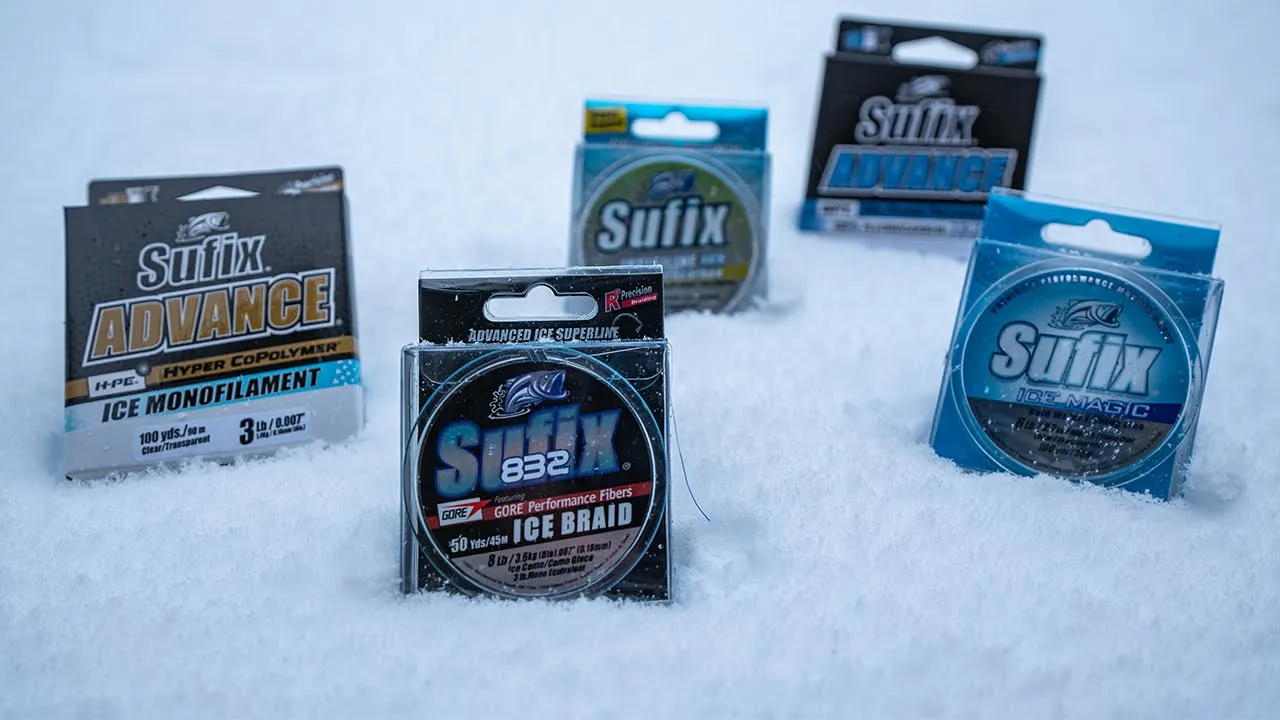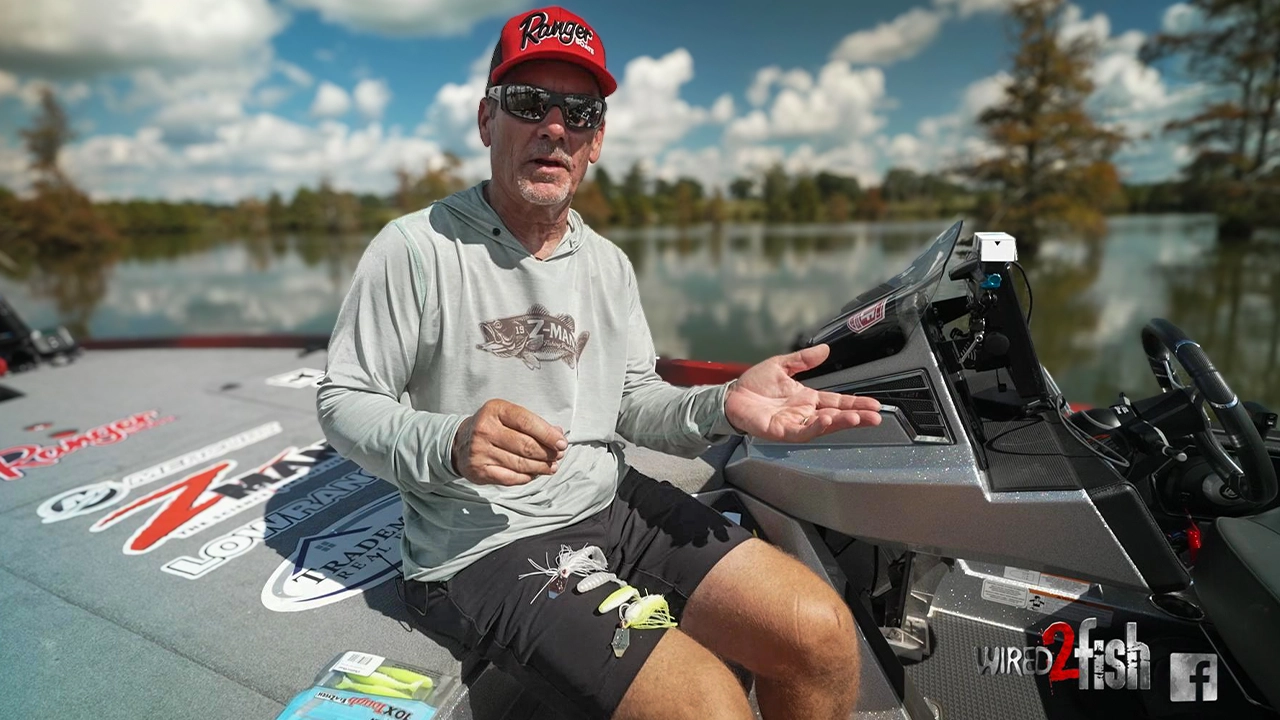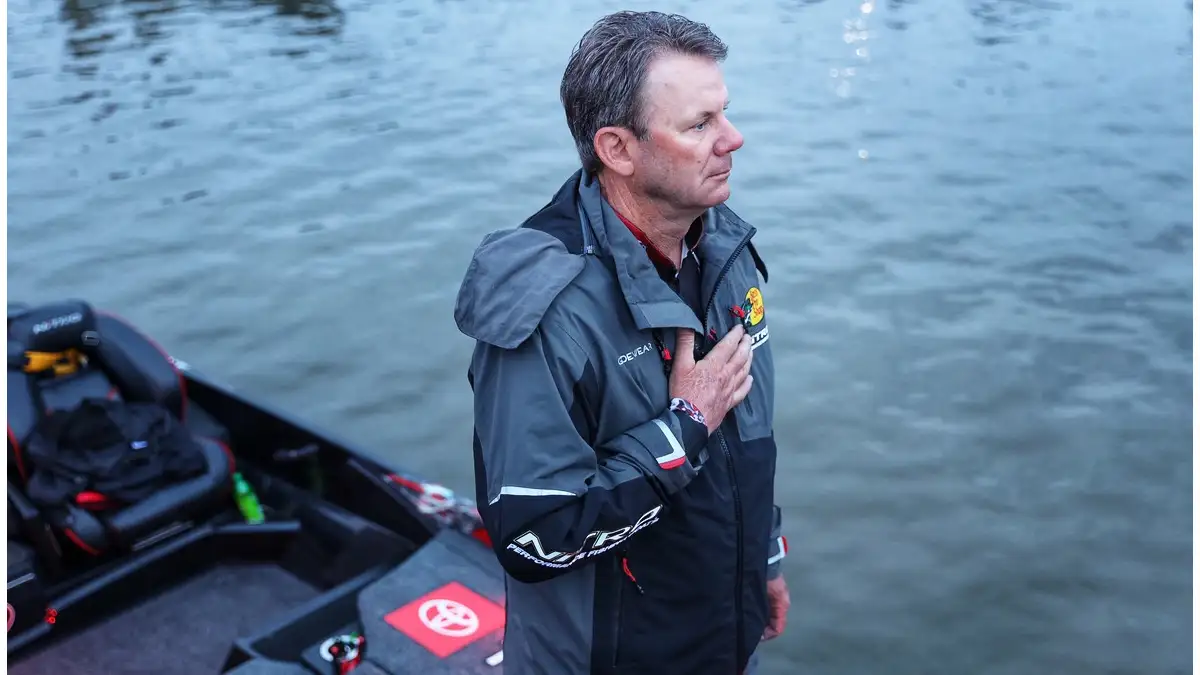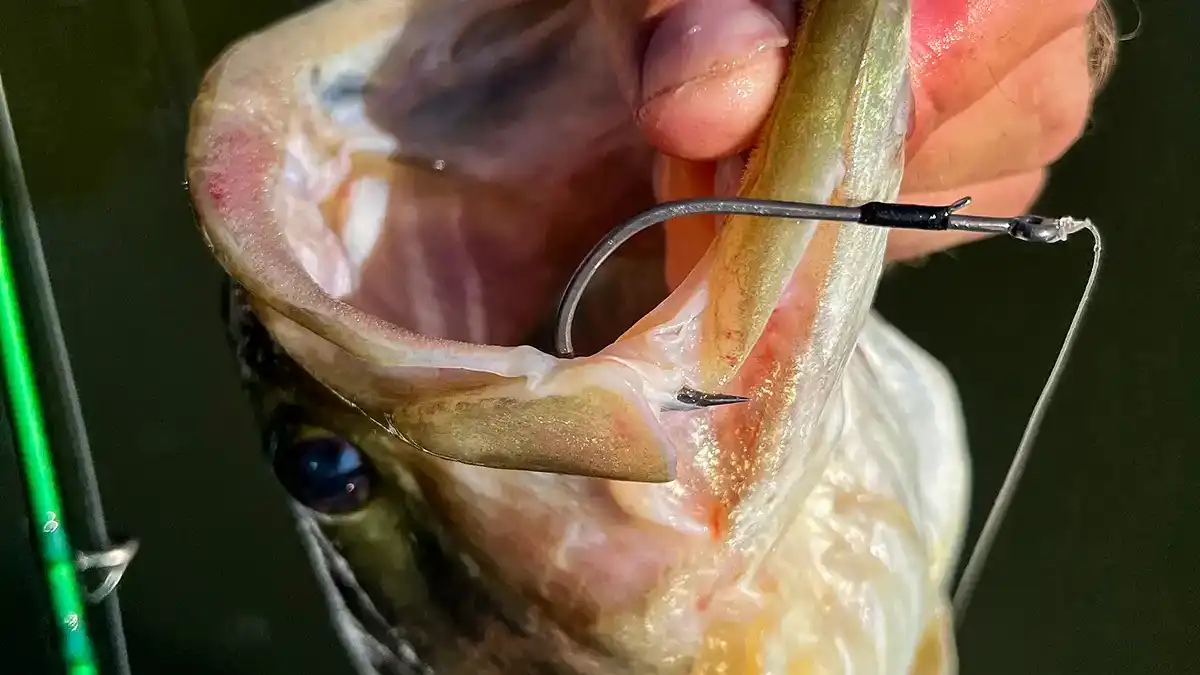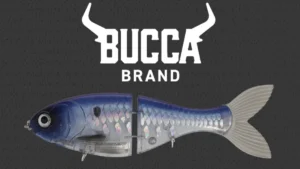Ice fishing line is essential ice fishing gear and comes in many options, which begs the question, “what type of line should I use and when?” The one commonality that ice line shares is that they’re formulated to perform well in cold and sub-zero temperatures. Minnesota-based fishing guide Tony Roach discusses when and why he uses braid, monofilament, and fluorocarbon ice fishing lines. He shares a few additional tips for reducing line memory (coiling) on the ice.
TONY’S ICE FISHING LINE (retail links)
- BRAID
- MONOFILAMENT
- FLUOROCARBON
- ICE FISHING LINE @ FishUSA
OTHER GEAR
Roach’s three core line choices:
-
BRAID
Roach is a big fan of braided ice fishing line due to its no-stretch, sensitivity, abrasion resistance, and low memory attributes. He uses braid whenever he can get away with it, which comes down to air temperature and water clarity. Braid gets the nod when fishing in a warm fish house or on the ice, assuming temperatures are 20 degrees or warmer. He shies away from using braid when fishing outside when it’s markedly cold. Unlike monofilament and fluorocarbon, braid retains some water, which tends to accumulate on the reel and run the risk of freezing up. Ice-optimized varieties such as Sufix 832 Advanced Ice Braid minimize water retention by combining a tight weave (pics) and hydrophobic water-repellent protection to resist freezing. Still, extreme cold may call for using a different line type. Water clarity is another factor to consider. Braid is more visible to the fish than monofilament or fluorocarbon. When fishing clear water, Roach’s workaround is to use a fluorocarbon leader to enhance stealth. He uses a longer leader, the clearer the water.
-
MONOFILAMENT
If you were only to have one type of ice fishing line, it would likely be monofilament, thanks to its ease of handling and versatility. Roach prefers using mono when hole-hopping outside. It sheds water, is stealthy, plenty strong, and allows you to fish inside or on the ice without re-rigging. Not all mono is created equally. Roach prefers using a low-stretch monofilament, as it improves bite detection and transmission to your rod tip, which can be especially important when fishing in deeper water. The bottom line is a quality mono performs well in all situations.
-
FLUOROCARBON
New-age ice fluorocarbon ice fishing line has dramatically improved handling characteristics compared to the original varieties. Fluorocarbon is nearly invisible to the fish, has less stretch than mono, sinks (heavier), and transmits bites excellently — all important ice fishing line attributes. While most of our Wired2fish staff use straight fluorocarbon regularly, Roach employs it primarily as a leader material when fishing a braided mainline. There are several benefits to this approach. Cost is one. Braid has excellent longevity as a primary line, whereas mono and fluorocarbon are typically changed annually (memory and weakening). With a braid backing, you can add a leader of fluorocarbon at your chosen length, be it 2 feet or 20 feet. A simple line-to-line knot (Alberto Knot) allows you to change your fluorocarbon ice fishing line size based on the target species, tactics, and techniques. Roach uses a line-to-line knot or a swivel when connecting braid and fluorocarbon. Go with a swivel when using lures that spin — doing so will significantly reduce line twist, which translates into lure spin, which fish don’t find appealing.
Line memory is the coiling effect that occurs when fishing line is stored on a reel. Roach recommends using reels with bigger spoons to remove line memory. Additionally, he offers a helpful line stretching tip that removes line memory on the fly. Removing the coiling improves bite detection and lure response from angler input.
Check out more ice fishing tips here!


